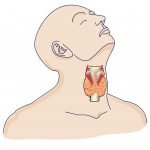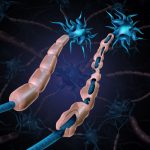Notes from the Field: November, 2020
JARED L. ZEFF, ND, VNMI, LAC
The following is not an article prepared for a medical journal. Not every statement of fact is cited or referenced. This is a commentary on the medicine, a running set of observations about practice in the field. It’s not meant to be a peer-reviewed presentation; rather, these are notes and thoughts from a practicing naturopathic physician, a primary care doc in general practice.
A Case of Severe Pain
I want to tell you about a case I just had, as it illustrates an approach to homeopathic prescribing that I’ve been honing during my years in practice because of its effectiveness.
A woman, age 34, came to see me from a nearby town. She has had advanced Lyme disease, a very difficult condition. A few years back, a local naturopathic physician saved her life, she said. She had been seeing another doctor for frequent recurrent UTIs, often with pus and blood in her urine, but the treatments from her conventional primary care physician were not working. Then her kidneys appeared to be shutting down. Finally, she consulted with the naturopathic doc, who diagnosed the Lyme disease and began treating her aggressively with antibiotics, glutathione, cat’s claw, and a number of other things she could not remember. She was on the antibiotics for 6-8 months. She began to feel better and better, and then seemed quite good. Prior to the Lyme disease, she had received a diagnosis of interstitial cystitis, and her bladder symptoms improved with the Lyme treatment.
About 3 months ago, she began to “flare,” with a return of the Lyme symptoms. Four months prior, she had her third baby and all seemed quite good. But now she was in constant pain, and the pain seemed to be getting worse. The naturopathic physician she had originally consulted was no longer in practice, and she found me on the internet. She had pain everywhere, especially spleen pain, she said, and abdominal pain, mostly in the lower left abdomen. She also had a constant headache, as well as many black spots in her vision, which were getting worse. She had mental fog and memory problems; she couldn’t find the right word, and it was sometimes hard to speak. She hurt in her back, her bladder and kidneys, her legs, shoulders, and face. She had severe fatigue. But her main complaint was pain; she hurt so much that it was even difficult to walk.
Out of desperation, she came to my office. I took her case, which took quite a bit longer than usual. I did my usual physical exam and labs. I ran a urinalysis and spun the urine and looked at it under the scope: nothing remarkable except occasional clumps of bacteria. No pus or blood.
During the long history, I gave her a dose of Ceanothus 200c due to the spleen pain she was reporting, which was confirmed by palpation. This was her most severe pain. Within a few minutes the spleen pain lightened, and her headache and back pain both reduced. As I continued with the physical exam, her abdomen was quite tender to palpation, and I gave her a dose of Colocynthis 200c. Her abdominal pain resolved, the rest of the headache and back pain resolved, and her kidney pain resolved. The spleen pain was gone at this point. Her mind cleared, and her vision improved.
As I laid out a treatment plan for her, I told her we were going to start at the foundation. We needed to improve her digestion and reduce the toxemia (evidenced by the high urinary indican and the acoustic cardiogram we ran, as well as by the abdominal pain). I recommended diet; constitutional hydrotherapy at home (she lives more than an hour away and is a mother of 3, so daily office treatments become problematic); a bitter tonic for the stomach; a bottle of the Ceanothus 1LM, to take as needed for spleen pain; and a bottle of Colocynthis 1LM, to take as needed for the abdominal (intestinal) pain. She is to contact me if the medicines bother her or if she gets worse. Otherwise, I’ll see her in a month.
I am reporting this case to you for a couple of reasons. First, it is an interesting case. These Lyme patients can be very difficult cases, and each one is different. Her presentation was pain, particularly spleen pain and abdominal pain. The case is by no means over. My other reason for writing about this case is to discuss my use of the 2 remedies that gave her such amazing and immediate relief.
Spheres and Essences
There are many prescribing strategies in homeopathic medicine. We are all familiar with the basic concepts, the similimum and the minimum dose, and most of us have read the Organon, Hahnemann’s masterwork that defined homeopathy. We are familiar with prescribing in the “constitutional” manner, ie, finding the remedy that best fits the totality of symptoms. We are familiar with prescribing in acute situations, like using Arnica for acute physical trauma. Hahnemann referred to this as “intercurrent” prescribing: the use of a remedy in an acute situation other than the constitutional prescription. When I studied homeopathy in the 1980s with a Belgium homeopath, he taught us 19 prescribing strategies. I have discussed this in several webinars. I chanced upon a different prescribing strategy by accident a number of years ago.
Many years ago, I had a patient who presented with abdominal pain. What can cause abdominal pain? Well, just about anything, from a heart attack to a bladder infection. I took her history. She described the pain as left-sided, under the rib cage, mostly toward the center of the abdomen. As I took her case and palpated her abdomen, I decided this was likely a pancreatic problem. Ultrasound was not readily available. Then I recalled that I had recently treated a case of pancreatitis successfully with Spongia, one of the most common remedies for that malady. It occurred to me that if a dose of Spongia helped, that might help confirm that she was suffering from a pancreatic problem. A dose of Spongia 200c resolved the acute pain. I presumed a case of pancreatitis and gave her the recommendations to more comprehensively address that, and she resolved. (Yes, we can successfully treat pancreatitis.)
As I contemplated that case, it struck me that I had used a homeopathic remedy to help diagnose an acute abdomen. I began to consider the implication of this: I could use remedies to help with diagnosis. I began to apply this concept when the circumstances warranted it. Over a period of time, I developed a list of remedies to use “diagnostically.” These same remedies can also be used specifically in treatment.
For the organ remedies, I use a potency of 200c:
- Ceanothus – Spleen
- Spongia – Pancreas
- Colocynthis – Intestine
- Lachesis – Appendix
- Apis – Ovary (right)
- Bryonia – Lung/Pleura
- Phosphorus – Lung
- Nux vomica – Stomach
- Thuja, Chimaphila – Prostate
- Cimicifuga – Uterus
- Gelsemium – Kidney
- Cinchona – Gallbladder
- Chelidonium – Liver
For the endocrine remedies, I use a potency of 12c:
- Thyroidinum
- Adrenal cortex
- Estradiol
- Testosterone
- Progesterone/Folliculinum
- Hypophysinum/Pituitary
It could reasonably be argued that this is not homeopathy, but something else. But let me dive more deeply into this. As I was struggling to learn homeopathy, through my early years of practice, I read much. I studied at one time with a Belgium homeopath, as I mentioned, as well as with my primary mentors, Harold Dick, John Bastyr, Bill Turska, Ravi Sahni, Robert Broadwell, and others. Homeopathy is a vast subject; there is much information to digest. The way my mind works, I began to understand that different remedies have different spheres of activity in the totality of their pictures. I found, for example, that in treating pneumonia, 2 remedies continually came to the top, though there were others as well. But Bryonia and Phosphorus were most often effective in treating the cases of pneumonia I encountered.
Remedy Spheres
Those 2 remedies are not “lung” remedies per se, but they have a great affinity for the lung and its pathologies. The “sphere” of these remedies includes the lung more than, say, Gentiana lutea. If you peruse a materia medica, you will see that Gentiana has a very short section on the respiratory organs, but a very large section on the stomach and intestines. In contrast, Bryonia and Phosphorus have large sections on the lung. The “sphere” of Gentiana is more in the digestive aspect, while that of Bryonia and Phosphorus are more in the respiratory. There are certainly other major lung remedies, such as Antimonium tartaricum; however, Antimonium tart has the peculiarity of a great accumulation of mucus, and consequent rattling in the breath, which leads one to its selection. Phosphorus and Bryonia are more broad in their respiratory application. While they are both polycrest remedies, with many different applications, their respiratory symptoms include many rubrics. The remedy must fit the picture, of course, or it will not have effect; but the application of these remedies in the respiratory sphere is very broad, hence their service in this general application.
Early in practice, I was often struggling to find the correct remedy. I had heard the theory, read several major books, and was in daily practice. Five years into practice, I was often seeing 20-25 people in a day, sometimes more. I did not have the time to spend hours repertorizing each case. I looked for more rapid ways to prescribe. Toward this end, I bought my first personal computer. It was called “portable,” though it was the size of a microwave oven, and the carry bag was big enough for one of my children to ride in, and I actually would carry one of them around in it if they begged enough. But the reason I got it was because I wanted to run one of the first computer programs to accomplish this task. I was looking for anything that might help me prescribe rapidly with accuracy.
Remedy Essences
Reading Margaret Tyler’s Homeopathic Drug Pictures and Catherine Coulter’s Portraits of the Remedies, I learned how to “see” remedies, that is, to see a “Pulsatilla” when she walked into the room, or a “Sepia,” or whatever. I learned that the remedies have what I came to call “essences.” If one reads the introductions to each remedy in Boericke’s Materia Medica or in Clark’s Dictionary of Practical Materia Medica, one will see the remedy picture summarized. These summaries generally explain the essence of the remedy. For example, the essence of Nux vomica is the serious person who is driven to overwork and is suffering the consequences of such activity. They tend to over-do, to drink coffee in the morning to wake up, and alcohol in the evening to wind down, and they depend on these things. They tend to overeat and to not take the best care of themselves, in order to get the job done. In the course of this, they develop gastric and hepatic complaints. They get headaches, etc. This is the “picture” of Nux, illustrating its “essence.” In order to be a more rapid and effective prescriber, I learned that I could categorize the remedies by their essences as well as by their spheres of activity, ie, the spheres of organs and tissues in which they acted. As one continues to practice, day after day, giving remedies to nearly every patient, one sharpens one’s “intuition” and catalogues more and more information of this nature in one’s memory. Adding to this a few keynotes, I could come up with a reasonable remedy within a few minutes for most patients.
Clinical Homeopathy
I also noticed that remedies act almost instantaneously. This is, of course, because they are semiotic in action, not biochemical. They affect the biochemistry, but through their information content, not their chemistry. Giving a remedy is like downloading information into a computer. It is not a chemical process; it is an information or programming process. A remedy is like a thumb drive in this regard. It conveys new organizational information into the biological system. I will give most patients a remedy while we are sitting, talking about their case, and then ask them within a few minutes whether they notice anything different. If they are in pain, a good remedy will have already eased the pain, etc. One does not need to wait 2 weeks to see the effect; it is apparent in almost all cases within a few minutes of giving the medicine.
Using these techniques, one can give a remedy after this rapid repertorization, based upon knowledge of the remedies’ essences and spheres, and then assess the effect within minutes. If nothing happens, rethink the case and give a different remedy. In this way, one can effectively and rapidly prescribe in a busy clinic. Then one decides upon the need for repetition of the remedy, and dispenses this, if indicated, along with whatever botanicals, dietary advice, etc, one needs to prescribe for the particular patient. I call this “clinical homeopathy.”
Respectfully,
Jared L. Zeff, ND, VNMI, LAc
References:
- National Multiple Sclerosis Society. Types of MS. 2020. Available at: https://www.nationalmssociety.org/What-is-MS/Types-of-MS. Accessed January 24, 2021.
- Deisenhammer F, Zetterberg H, Fitzner B, Zettl UK. The Cerebrospinal Fluid in Multiple Sclerosis. Front Immunol. 2019;10:726.

Jared L. Zeff, ND, VNMI, LAc is a licensed doctor of naturopathic medicine and a licensed acupuncturist. In addition to functioning as Medical Director at the Salmon Creek Naturopathic Clinic in Vancouver, WA, Dr Zeff taught on the faculty at National University of Natural Medicine in Portland, OR, where he was also Dean from 1988 to 1993, and holds a professorship in Naturopathic Medicine. Dr Zeff is a graduate of the University of California, NCNM, and the Emperor’s College of Traditional Oriental Medicine. He, along with Pamela Snider, is the author of the AANP’s Definition of Naturopathic Medicine, and the Therapeutic Order concept.









